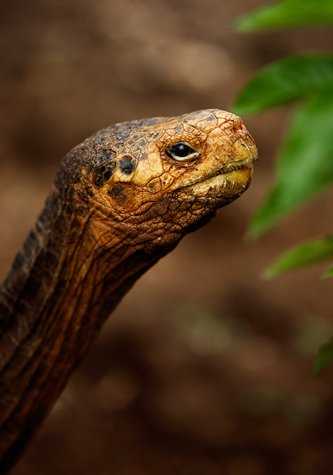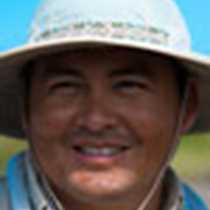A quiet and overcast day became one of the most successful days in the Galapagos Islands. Today we were visiting the south coast of Santa Cruz Island. This island has an area of 986 square kilometers (381 sq. mi) and a maximum altitude of 864 meters (2,835 ft). Santa Cruz is the second largest island after Isabela and is a large dormant volcano. Because of its geological formation and location within the archipelago, Santa Cruz is a mosaic of species.
In our first outing we went to the most conspicuous place within the Galapagos National Park headquarters, Fausto Llerena tortoise breeding center. This place has been operational since the mid-60s researching the connecting factors to the low reproductive success of the different population of Galapagos giant tortoises. Our walk through the different corrals imprinted the need for preserving and spread among all of us the conservation message.
After visiting the breeding center, we headed back to town to get to know the culture of the Galapageños. The main economy of this town is tourism as well as agriculture and fishing. A brief stop in the fishing market was a must; the fresh catch of the day was already for display. Pelicans, herons, gulls, and sea lions were looking for some fresh free meals while fishermen and people from town and visitors shared anecdotes about their experience at sea. To complete our morning outing, we headed to the highlands to have lunch but with a momentary stop at el Trapiche. At this farm Adriano, who owns the place, narrated and described us the story of his life back in early 50’s when his family and he migrated to Santa Cruz Island. He started his new life making panela and aguardiente out of sugarcane juice when electricity was not available in the highlands. Nowadays, he also produces cheese, coffee, and cacao. We all enjoy the delicacies made by his family.
After lunch we gather for more adventure on the plains of the island. By bus we headed to the migration route of the emblematic and charming giant tortoises. Several tortoises were sighted. The sounds of different land birds such as warblers, finches, mockingbirds, and flycatchers made our outing very pleasant. Our natural quest leads us to the interior of the forest where several tortoises of different sizes and ages were sighted.
The heat of the afternoon went down and many of our guest decided to stay longer in Puerto Ayora to get to know the people and what they do after late in the afternoon. Their interest made them to find out that people in Galapagos play ecuavolley. Another day in this astonishing archipelago gave us an outstanding experience.







